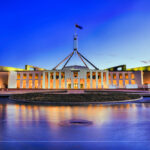Australian study suggests gambling problems on the rise

A study in Australia has revealed that problem gambling is growing across the country, with around three million people at risk of addiction.
The Australian Gambling Research Centre surveyed 3,881 adults and found that gambling participation has increased from 57% in 2019 to 65% in 2024. Lotteries and sports betting were among the most common forms of gambling.
While half of Australians reported no gambling-related harm, the study also revealed a growing proportion who did.
Lead researcher Dr Gabriel Tillman said 15% of respondents had experienced gambling harm in the past year, which was up from 11% in 2019. The harms included financial stress, borrowing money, and skipping meals.
High-risk gambling, affecting 7.7% of regular gamblers, was linked to poor mental health, family violence, and financial hardship. Young people aged 18 to 24 were nearly twice as likely to be at high risk, a trend researchers linked to targeted gambling advertising.
Commenting on the research, former gambler Shayne Rodgers said he fears that gambling ads are conditioning children, saying, “We go on football apps and things like that and the first thing that they see when they try and watch a replay of the game is gambling ads.”
With Australians said to be losing an estimated AU$32 billion (US$21.1 billion)1 AUD = 0.6586 USD
2025-09-24Powered by CMG CurrenShift each year on gambling, the government is under pressure to implement key policy ideas from 2023’s Murphy Report, which recommended a ban on all online gambling advertising.
Charlotte Capewell brings her passion for storytelling and expertise in writing, researching, and the gambling industry to every article she writes. Her specialties include the US gambling industry, regulator legislation, igaming, and more.
Verticals:
Sectors:
Topics:
Dig Deeper
The Backstory
Warning signs escalate as participation and harm climb
Gambling in Australia is growing more pervasive and more harmful, sharpening pressure on Canberra to act. A new nationwide survey by the Australian Gambling Research Centre found participation jumped to 65% in 2024 from 57% in 2019, with lotteries and sports wagering leading the way. The study reported that 15% of respondents experienced gambling harm in the past year, up from 11% in 2019, with high-risk behavior linked to financial stress, mental health issues and family violence. Young adults 18 to 24 were nearly twice as likely to be at high risk, a shift researchers tied to targeted advertising. The findings, published in an AGRC survey highlighting participation gains and rising harm, have amplified calls for tighter controls on ads and access.
The cumulative impact is large and diffuse. Australians lose an estimated AU$32 billion each year to gambling, according to industry and policy estimates cited in the AGRC study. Broader social costs are harder to quantify but include elevated risks of domestic violence and suicide, themes echoed across health and policing data. The Australian Institute of Health and Welfare offers complementary national context on participation patterns and harm categories in its Gambling in Australia overview, underscoring how risk tends to concentrate among frequent bettors and younger cohorts.
Reform momentum stalls as politics collide with revenue and sport
The 2023 parliamentary inquiry led by the late Peta Murphy recommended 31 measures to curb harm, including a phased ban on online gambling advertising. Two years on, critics say the core proposals remain largely dormant. Advocates argue the delay is exposing minors and vulnerable users to a constant stream of promotions embedded in sport and media. In an assessment of the lag, reform groups and medical bodies accused the government of allowing another generation to normalize betting odds alongside AFL and NRL coverage. Their case and the timeline are set out in reporting on the Murphy reforms and a contested two-year implementation gap.
Prime Minister Anthony Albanese has acknowledged the problem yet pushed back on an outright ad ban, calling it hard to enforce and potentially counterproductive if bettors shift offshore. He has also cited the financial reliance of sports codes and broadcasters on wagering sponsorships. The prime minister’s position, including concerns about illegal alternatives and revenue leakage, is detailed in coverage of the government’s stance on ad bans and practical constraints. ABC’s recent political wrap also placed gambling alongside sanctions and energy on the government’s crowded agenda, reflecting the trade-offs animating cabinet discussion, as outlined in an ABC overview of the policy mix.
The politics are fraught. Reform advocates argue that youth exposure to ads is incompatible with harm minimization and point to unanimous support for the Murphy report’s recommendations. The government notes incremental steps like banning credit cards for online betting and launching the national self-exclusion system. The clash pits public health priorities against sport’s commercial model and the risk of channeling gamblers to unregulated platforms.
Enforcement pressure builds around BetStop and compliance gaps
Even as policy debates drag, regulators are testing the limits of enforcement. The Australian Communications and Media Authority recently warned four bookmakers for violating self-exclusion rules under the BetStop regime, finding they sent marketing messages to self-excluded individuals and, in one case, failed to close accounts. Buddybet has exited the market, Ultrabet entered a court-enforceable undertaking, and VicBet and Topbet were formally warned. ACMA also fined PointsBet AU$500,000 over BetStop breaches. The details are laid out in regulatory action against operators that failed to honor self-exclusion.
BetStop is emerging as a cornerstone of harm minimization. The national register requires all licensed operators to block accounts and stop marketing to enrolled users for periods ranging from three months to life. ACMA’s program guide explains the obligations in full on the BetStop information page. The recent compliance sweep shows the system can bite, yet also highlights operational weaknesses as platforms integrate identity checks, data matching and marketing suppression at scale.
Regional comparisons and technology choices sharpen the policy path
Australia’s debate is unfolding alongside varied approaches in Asia. In the Philippines, the gambling regulator is exploring artificial intelligence for e-KYC and real-time behavior monitoring to spot risky patterns, trigger cooling-off periods and stop fake registrations. The initiative, presented to lawmakers amid a crackdown on online gambling payments, is profiled in coverage of PAGCOR’s push for AI-enabled oversight. While the legal frameworks differ, the experiment signals how regulators may leverage data to police harm in high-velocity markets.
Elsewhere, policymakers are linking betting to public goods to win support. In Hong Kong, a leading think tank proposed dedicating a large share of prospective basketball betting revenue to community facilities, coaching and international events. That concept, described in reporting on Hong Kong’s sports funding proposal, contrasts with Australia’s emphasis on harm reduction and advertising limits, but underscores the fiscal and political calculus that often shapes gambling policy.
The stakes for Australia are clear. Harm metrics are trending up, compliance lapses are testing regulator credibility and the ad-sport nexus remains unresolved. Whether Canberra opts for a phased advertising wind-down, tighter enforcement and data-driven guardrails, or a hybrid path, the next steps will determine whether rising harm curves are bent down or embedded into the country’s sporting culture.








